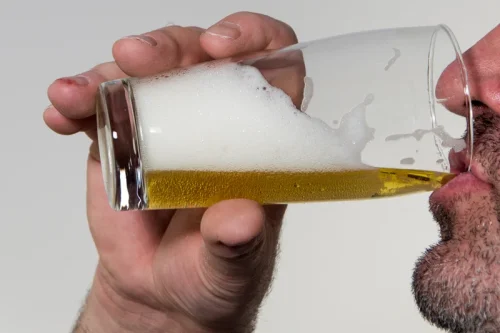Expanding the continuum of substance use disorder treatment: Nonabstinence approaches PMC

A high-risk situation is defined as a circumstance in which an individual’s attempt to refrain from a particular behaviour is threatened. While analysing high-risk situations the client is asked to generate a list of situations that are low-risk, and to determine what aspects of those situations differentiate them from the high-risk situations. High-risk situations are determined by an analysis of previous lapses and by reports of situations in which the client feels or felt “tempted.” Appropriate responses are those behaviours that lead to avoidance of high-risk situations, or behaviours that foster adaptive responses.

Journal of Studies on Alcohol
It is the dominant approach in the United States to resolving alcoholism and drug abuse (e.g., “Just Say No”). Abstinence was at the base of Prohibition (legalized in 1919 with the Eighteenth Amendment) and is closely related to prohibitionism—the legal proscription of substances and their use. When someone abuses a substance for a long time, they will have a higher tolerance for its effects. It is the abstinence violation effect refers to for this reason that someone’s tolerance declines following a period of abstinence and that they may overdose if they start using again at the same level as before. Relapse prevention includes understanding what triggers substance abuse, which varies from person to person. As an example, when out with friends at their favorite hangout, someone with alcohol use disorder may feel like having a drink.
Related terms:
- In its original form, RP aims to reduce risk of relapse by teaching participants cognitive and behavioral skills for coping in high-risk situations (Marlatt & Gordon, 1985).
- Helping clients develop positive addictions or substitute indulgences (e.g. jogging, meditation, relaxation, exercise, hobbies, or creative tasks) also help to balance their lifestyle6.
- The AVE was introduced into the substance abuse literature within the context of the “relapse process” (Marlatt & Gordon, 1985, p. 37).
- The relationships between withdrawal, craving and relapse in substance use are complex and have been reviewed and discussed extensively elsewhere (e.g., Patten & Martin, 1996; Piasecki, 2006; Serre, Fatseas, Swendsen, & Auriacombe, 2015; Wray, Gass, & Tiffany, 2013).
- Her long-term research interests include the development of a comprehensive understanding of how problematic alcohol use and interpersonal relationship processes interact to influence various physical, emotional, and relational outcomes for individuals and their relationship partners.
Approach oriented participants may see themselves as more responsible for their actions, including lapse, while avoidance-based coping may focus more on their environment than on their own actions14. Additionally, the support of a solid social network and professional help can play https://ecosoberhouse.com/article/how-alcohol-can-affect-relationships/ a pivotal role. Encouragement and understanding from friends, family, or support groups can help individuals overcome the negative emotional aftermath of the AVE. A comparison of objective and subjective measures of alcohol dependence as predictors of relapse following treatment.
- Gordon as part of their cognitive-behavioral model of relapse prevention, and it is used particularly in the context of substance use disorders.
- In other words, AVE describes the thoughts, feelings, and actions a person goes through after they make a mistake and have a drink or abuse a substance, despite trying to quit.
- The term relapse may be used to describe a prolonged return to substance use, whereas lapsemay be used to describe discrete,…
- These emotional and cognitive reactions intensify the Abstinence Violation Effect, which may lead to a further loss of control and increased vulnerability to subsequent relapses or deviations from the established rule.
- Outcomes in which relapse prevention may hold particular promise include reducing severity of relapses, enhanced durability of effects, and particularly for patients at higher levels of impairment along dimensions such as psychopathology or dependence severity21.
ReviewShort-term abstinence effects across potential behavioral addictions: A systematic review
In the 1980s and 1990s, the HIV/AIDS epidemic prompted recognition of the role of drug use in disease transmission, generating new urgency around the adoption of a public health-focused approach to researching and treating drug use problems (Sobell & Sobell, 1995). The realization that HIV had been spreading widely among people who injected drugs in the mid-1980s led to the first syringe services programs (SSPs) in the U.S. (Des Jarlais, 2017). Early attempts to establish pilot SSPs were met with public outcry and were blocked by politicians (Anderson, 1991). In 1988 legislation was passed prohibiting the use of federal funds to support syringe access, a policy which remained in effect until 2015 even as numerous studies demonstrated the effectiveness of SSPs in reducing disease transmission (Showalter, 2018; Vlahov et al., 2001).
Environmental manipulation and behavioural counseling
The AVE was introduced into the substance abuse literature within the context of the “relapse process” (Marlatt & Gordon, 1985, p. 37). Relapse has been variously defined, depending on theoretical orientation, treatment goals, cultural context, and target substance (Miller, 1996; White, 2007). It is, however, most commonly used to refer to a resumption of substance-use behavior after a period of abstinence from substances (Miller, 1996).
Exercise dependence: A systematic review
Along with the client, the therapist needs to explore past circumstances and triggers of relapse. Also, the client is asked to keep a current record where s/he can self-monitor thoughts, emotions or behaviours prior to a binge. One is to help clients identify warning signs such as on-going stress, seemingly irrelevant decisions and significant positive outcome expectancies with the substance so that they can avoid the high-risk situation. The second is assessing coping skills of the client and imparting general skills such as relaxation, meditation or positive self-talk or dealing with the situation using drink refusal skills in social contexts when under peer pressure through assertive communication6. Self-efficacy is defined as the degree to which an individual feels confident and capable of performing certain behaviour in a specific situational context5.
- One of the key features of the AVE is its potential to trigger a downward spiral of further relapse and continued substance use.
- A person who can execute effective coping strategies (e.g. a behavioural strategy, such as leaving the situation, or a cognitive strategy, such as positive self-talk) is less likely to relapse compared with a person lacking those skills.
- Oxford English Dictionary defines motivation as “the conscious or unconscious stimulus for action towards a desired goal provided by psychological or social factors; that which gives purpose or direction to behaviour.
- Upon breaking the self-imposed rule, individuals often experience negative emotions such as guilt, shame, disappointment, and a sense of failure.

In contrast to the cognitive restructuring strategies typical of traditional CBT, MBRP stresses nonjudgmental attention to thoughts or urges. From this standpoint, urges/cravings are labeled as transient events that need not be acted upon reflexively. This approach is exemplified by the “urge surfing” technique [115], whereby clients are taught to view urges as analogous to an ocean wave that rises, crests, and diminishes. Rather than being overwhelmed by the wave, the goal is to “surf” its crest, attending to thoughts and sensations as the urge peaks and subsides. Broadly speaking, there are at least three primary contexts in which genetic variation could influence liability for relapse during or following treatment. First, in the context of pharmacotherapy interventions, relevant genetic variations can impact drug pharmacokinetics or pharmacodynamics, thereby moderating treatment response (pharmacogenetics).
For which alcohol abusers is controlled-drinking therapy or abstinence therapy superior?
A final emphasis in the RP approach is the global intervention of lifestyle balancing, designed to target more pervasive factors that can function as relapse antecedents. For example, clients can be encouraged to increase their engagement in rewarding or stress-reducing activities into their daily routine. Overall, the RP model is characterized by a highly ideographic treatment approach, a contrast to the “one size fits all” approach typical of certain traditional treatments.


